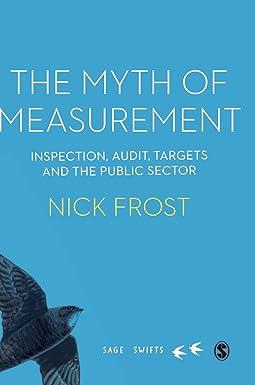Answered step by step
Verified Expert Solution
Question
1 Approved Answer
Needed 5. Compute the unit cost for each product under the old manufacturing system. 6. Compute the unit cost for each product under the JIT


Needed
5. Compute the unit cost for each product under the old manufacturing system.
6. Compute the unit cost for each product under the JIT system.
7. Which of the unit costs is more accurate? Provide a detailed explanation, which should also include in your explanation of how the computational approaches differ between the two approaches.
8. Calculate the decrease in total overhead costs under JIT in comparison to what was the overhead prior to JIT implementation. In addition, provide at least 2 possible reasons that explain the decrease.
D J K L M N O P I Lawn Inc. implemented a JIT manufacturing system. After one year of using JIT the company wants to compare product under the JIT system with product cost under the old system. Lawn Inc. makes 2 products weed eaters and lawn edgers. The unit prime cost under the old system are as follows: Weed Eaters Lawn Edgers Direct materials $12 Direct Labor 4 30 $45 Under the old manufacturing system, the company operated 3 service centers(Maintenance, Materials handling, and Building and grounds) and 2 production departments (Machining and Assembly). Overhead was applied using departmental overhead rates. The direct overhead costs associated with each department for the year preceding the installation of JIT are as follows: Particulars Cost Maintenance $110,000 Materials handling 90,000 Building and grounds 150,000 Machining 281.800 Assembly 175,000 Total $806,800 Under the old system, the overhead costs of the service departments were allocated directly to the producing departments using the direct method that was covered in AC321 Chapter 7. The overhead rate for the Machining Department was based on machine hours, and the overhead rate for assembly was based on direct labor hours. During the last year of operations for the old system Particulars Hours Units Machining department used 80,000 machine hours Assembly Department used 20,000 direct labor hours Each weed eater required machining hours 0.25 direct labor hour in Assembly Each lawn edger required machining hours 0.5 direct labor hour in Assembly Bases for allocation of service costs are as follows: Machining Assembly Total Machine Number of Material hours Moves 80,000 90,000 20,000 60,000 100,000 150,000 Square Feet of Space 70,000 30,000 100,000 Upon implementing JIT, a manufacturing cell for each product was created to replace the departmental structure. Maintenance and materials handling were both decentralized to the cell level. Cell workers were trained to operate the machines in each cell, assemble the components, maintain the machines, and move the partially completed units from one point to the next within the cell. The company produced and sold 20,000 Weed Eaters 30,000 Lawn Edgers The following costs have been assigned to the manufacturing cells: Direct materials Direct labor Direct overhead Allocated overhead Total Weed Eater Cell Lawn Edger Cell 185,000 $ 1,140,000 66,000 660,000 99,000 350,500 75,000 75,000 425,000 $ 2,225,500 D J K L M N O P I Lawn Inc. implemented a JIT manufacturing system. After one year of using JIT the company wants to compare product under the JIT system with product cost under the old system. Lawn Inc. makes 2 products weed eaters and lawn edgers. The unit prime cost under the old system are as follows: Weed Eaters Lawn Edgers Direct materials $12 Direct Labor 4 30 $45 Under the old manufacturing system, the company operated 3 service centers(Maintenance, Materials handling, and Building and grounds) and 2 production departments (Machining and Assembly). Overhead was applied using departmental overhead rates. The direct overhead costs associated with each department for the year preceding the installation of JIT are as follows: Particulars Cost Maintenance $110,000 Materials handling 90,000 Building and grounds 150,000 Machining 281.800 Assembly 175,000 Total $806,800 Under the old system, the overhead costs of the service departments were allocated directly to the producing departments using the direct method that was covered in AC321 Chapter 7. The overhead rate for the Machining Department was based on machine hours, and the overhead rate for assembly was based on direct labor hours. During the last year of operations for the old system Particulars Hours Units Machining department used 80,000 machine hours Assembly Department used 20,000 direct labor hours Each weed eater required machining hours 0.25 direct labor hour in Assembly Each lawn edger required machining hours 0.5 direct labor hour in Assembly Bases for allocation of service costs are as follows: Machining Assembly Total Machine Number of Material hours Moves 80,000 90,000 20,000 60,000 100,000 150,000 Square Feet of Space 70,000 30,000 100,000 Upon implementing JIT, a manufacturing cell for each product was created to replace the departmental structure. Maintenance and materials handling were both decentralized to the cell level. Cell workers were trained to operate the machines in each cell, assemble the components, maintain the machines, and move the partially completed units from one point to the next within the cell. The company produced and sold 20,000 Weed Eaters 30,000 Lawn Edgers The following costs have been assigned to the manufacturing cells: Direct materials Direct labor Direct overhead Allocated overhead Total Weed Eater Cell Lawn Edger Cell 185,000 $ 1,140,000 66,000 660,000 99,000 350,500 75,000 75,000 425,000 $ 2,225,500Step by Step Solution
There are 3 Steps involved in it
Step: 1

Get Instant Access to Expert-Tailored Solutions
See step-by-step solutions with expert insights and AI powered tools for academic success
Step: 2

Step: 3

Ace Your Homework with AI
Get the answers you need in no time with our AI-driven, step-by-step assistance
Get Started


